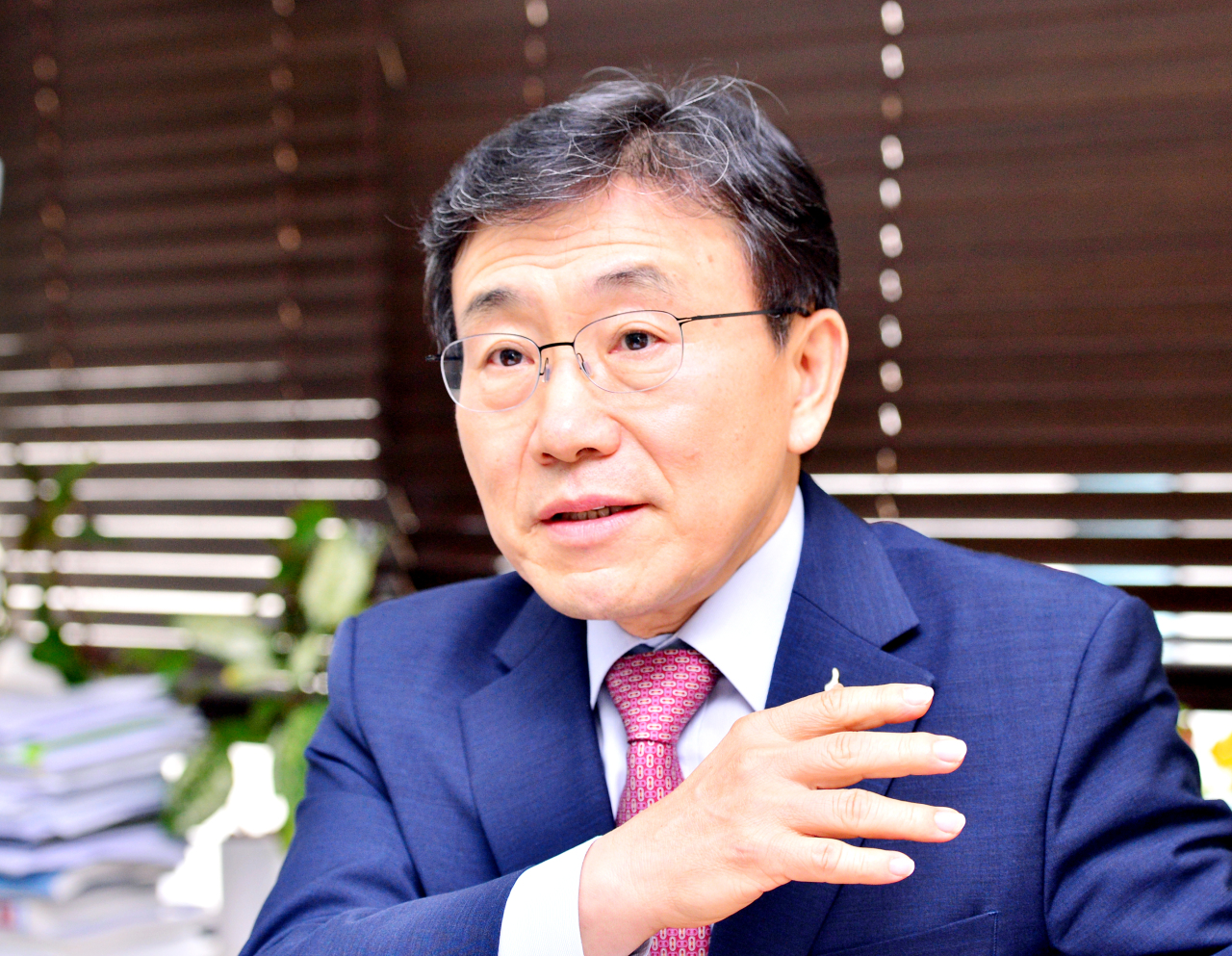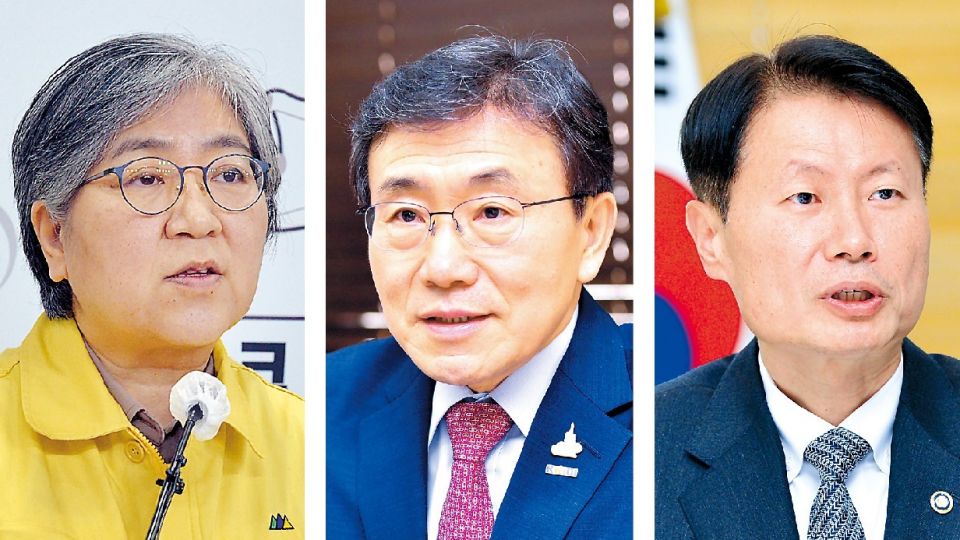May 30, 2022
SEOUL – Last week South Korea saw its top health officials leave office after guiding the country through an unprecedented time.
In February 2020, the first wave of infections gripped Daegu and its neighboring North Gyeongsang Province, making Korea one of the first countries in the world to be struck by COVID-19 after China. With no playbook to go by, these three health leaders worked from scratch to keep the country safer.
Jeong Eun-kyeong

On the left: Jeong Eun-kyeong speaks at one of the early government COVID-19 briefings on Feb. 2, 2020. On the right: Jeong speaks during a briefing held Feb. 14. (KDCA)
Day one of Korea’s COVID-19 crisis was Jan. 20, 2020, when the first patient was detected at an airport screening. But the agency’s work under Jeong began long before that discovery.
Months ahead of a “mysterious pneumonia-like illness” being reported in Wuhan, China, in late 2019, the national health protection agency had already been preparing for an eerily similar scenario. That dress rehearsal allowed the agency to quickly assemble diagnostic tools like real-time polymerase chain reaction tests and epidemiological investigation protocols within weeks of the disease’s arrival.
Jeong’s infectious disease leadership predates her four years and 10 months at the helm of the Korea Disease Control and Prevention Agency, rebranded in September 2020 from the former Korea Centers for Disease Control and Prevention. During the 2015 outbreak of the Middle East respiratory syndrome, another coronavirus disease, she was the director of the agency’s disease prevention division.
For over two years, Jeong was a constant voice of science and caution when politics got in the way of important pandemic decisions, leading the country through every step of the way, from coming up with test kits to carrying out vaccinations.
In her last address as the agency’s chief on May 17, she thanked Koreans for their patience and cooperation with disease control efforts, and front-line workers for their hard work and dedication.
“It’s been my honor to lead the agency in a time of uncertainty,” she said.
Kwon Deok-cheol

Kwon Deok-cheol speaks during an interview with The Korea Herald on May 13, 2020. (Park Hyun-koo/The Korea Herald)
Kwon worked his way up to holding the post of health minister in the middle of a pandemic after 30 years of service in public health and welfare.
He was among key health officials coordinating Korea’s response to the MERS outbreak, as the head of the ministry’s health care policy division, and the following revamp of state infectious disease management systems. He served as the vice health minister for nearly two years in the aftermath of MERS, and then as the president of the ministry’s Health Industry Development Institute.
As minister, he came forward during moments of accountability. At news briefings he apologized for the vaccine delays, health care system collapses and painful social distancing requirements.
As he left his post on May 29, he delivered a message of hope as the country endures a still ongoing crisis. “Our solidarity and commitment to overcome and rebuild that I witnessed during my time in service give me hope that we will get through this,” he said.
Kim Ganglip

Kim Ganglip speaks during an interview with The Korea Herald on Dec. 6, 2021. (Park Hyun-koo/The Korea Herald)
In the early stage of the pandemic, government COVID-19 briefings were a daily affair. Kim, who was then the vice health minister, was the face and voice that delivered day-to-day developments to Koreans. When experts were still grappling with unknowns and public anxiety ran high, he was the communicator in the fast-evolving situation.
Unlike other high-level health officials who were more reserved, Kim did not shy away from the press and tried to create more occasions for communication and question-taking through news conferences.
As drug safety minister he fast-tracked the clearing process of vaccines and treatments so that they would become available on the front lines in time.
“In a pandemic, I believe that addressing and responding to public concerns is a critical function of public health service,” he told The Korea Herald during an interview last year.


